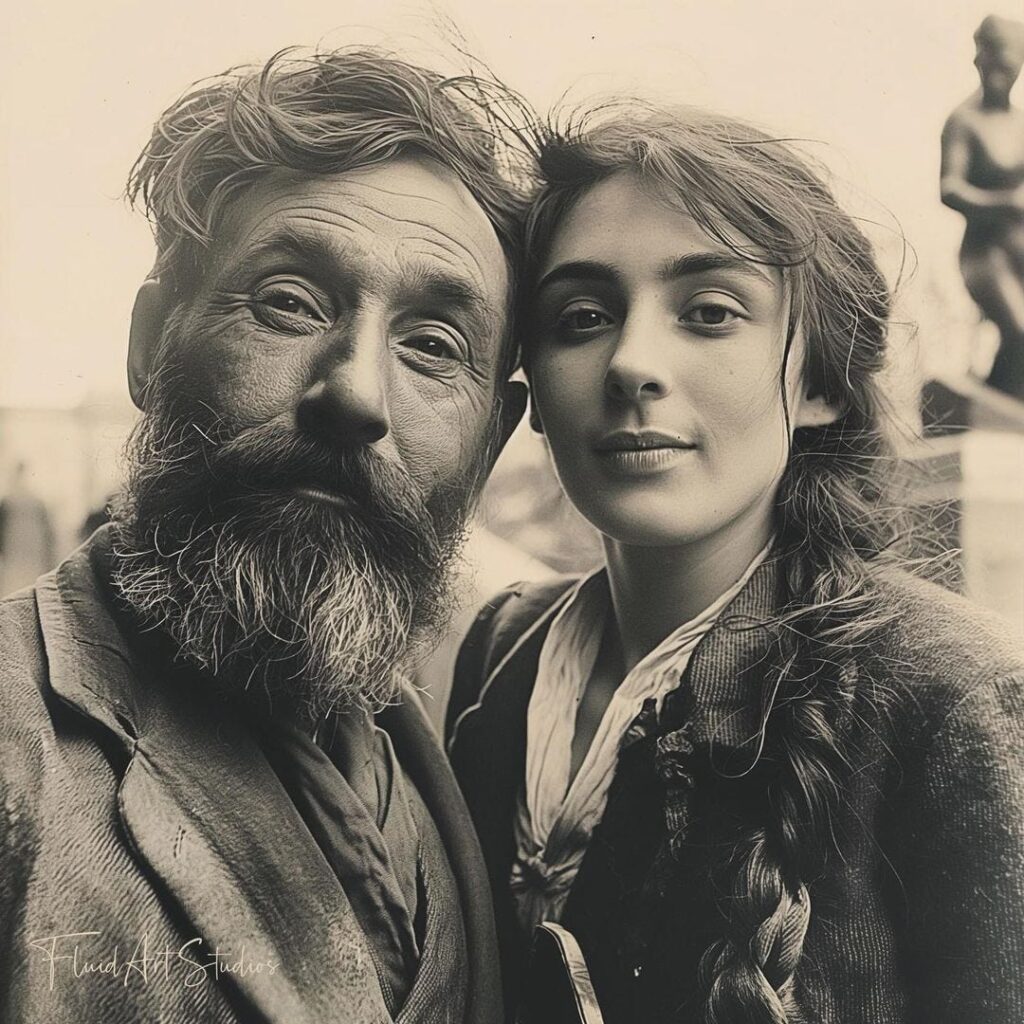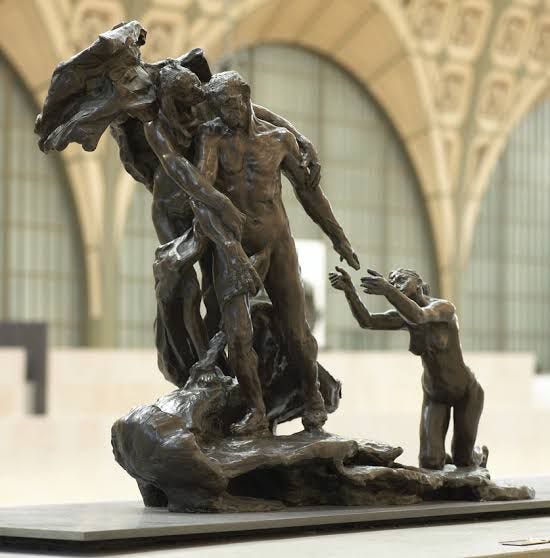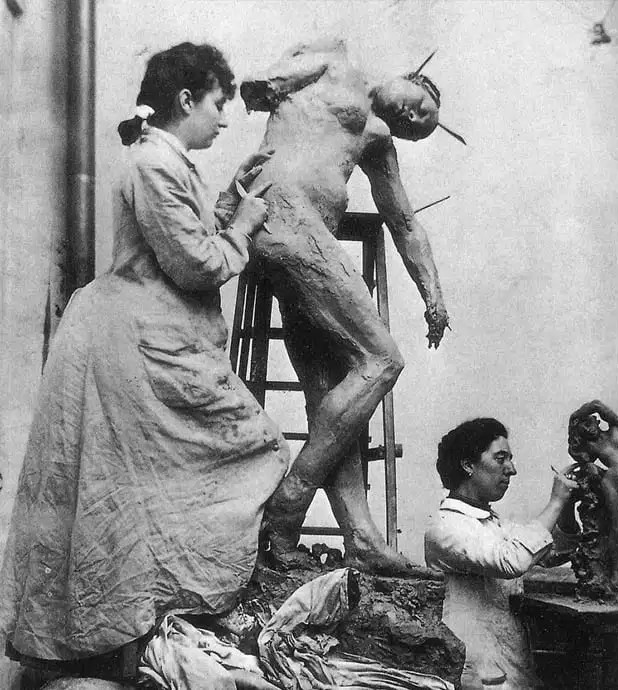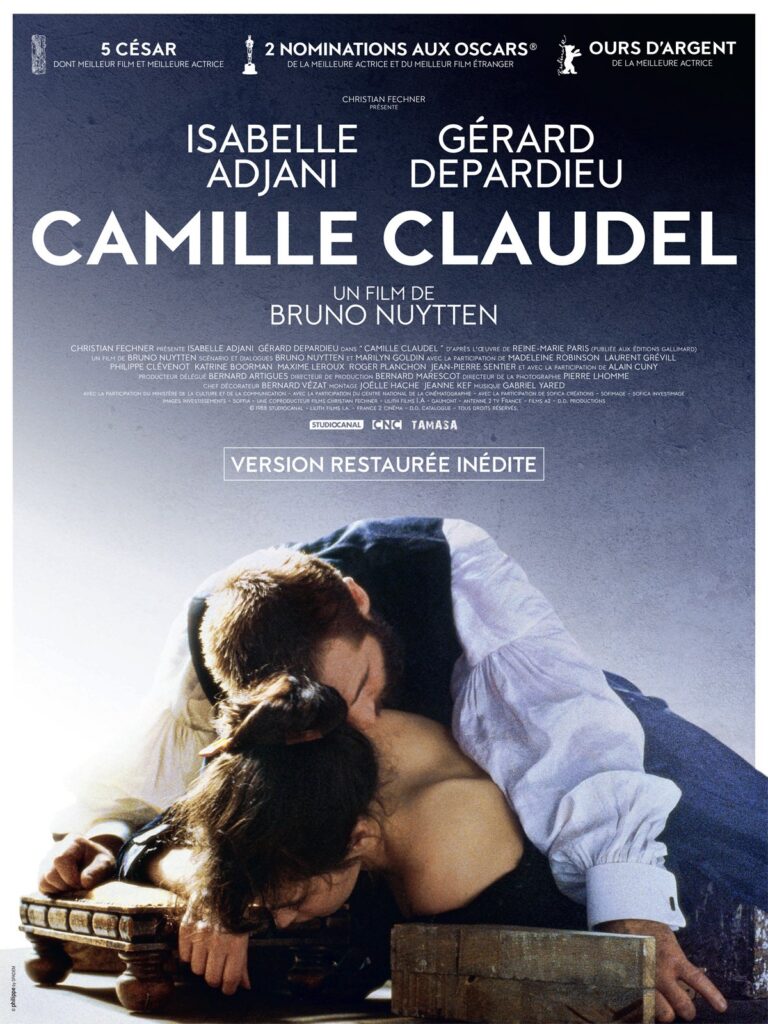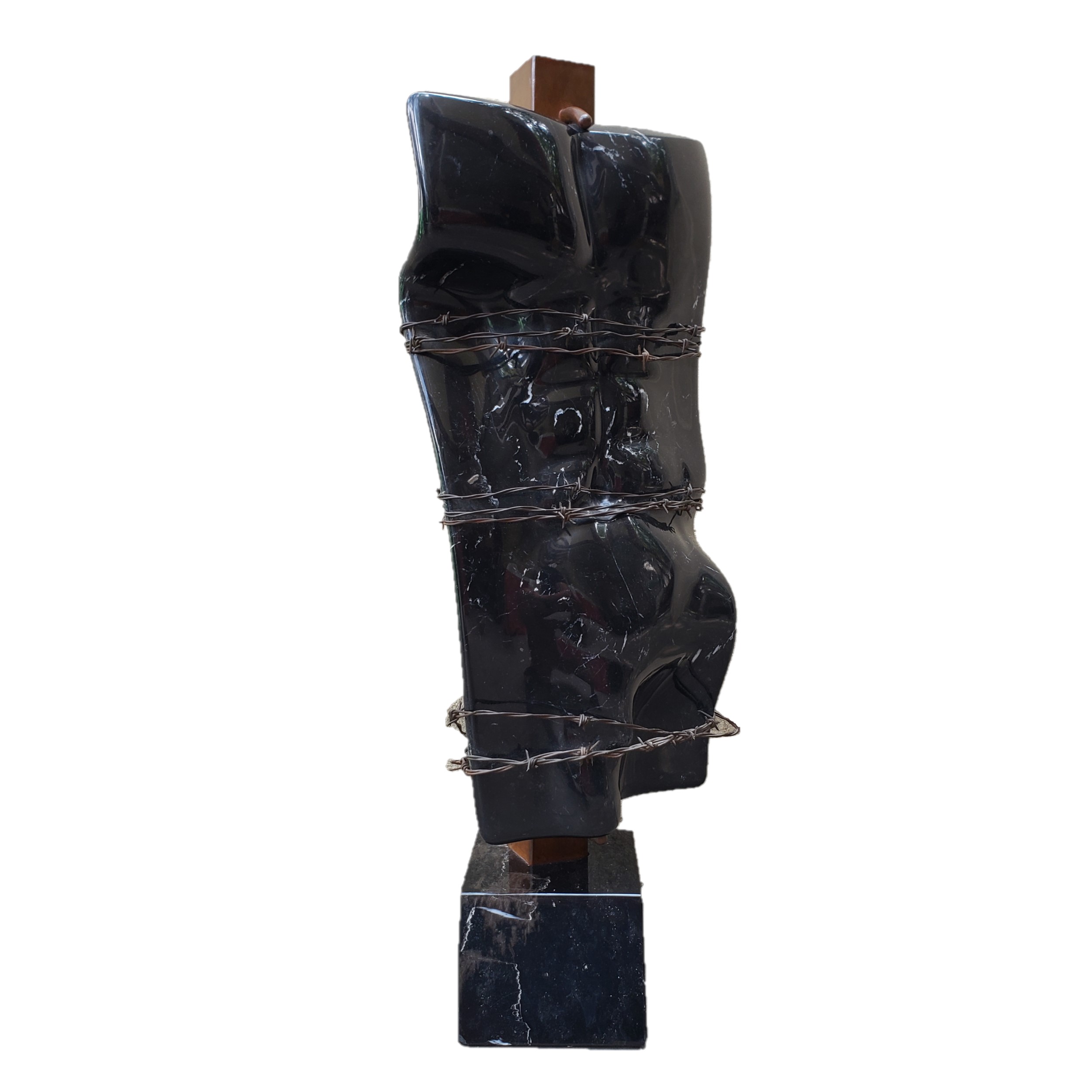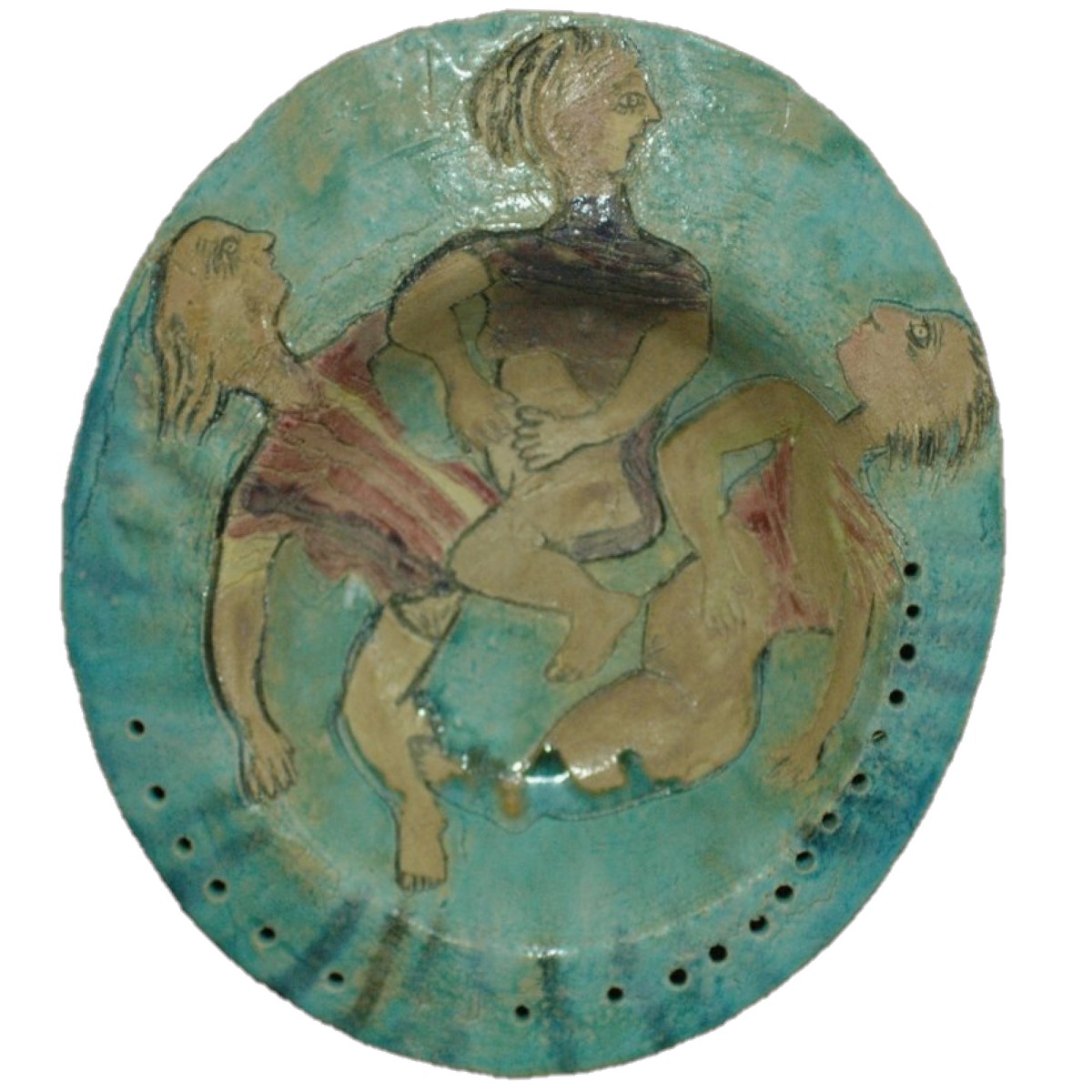“We are two ghosts in an empty lot.“
-Claudel to Rodin
Not everyone knows her name, and those who do often recognize her as the romantic partner of the prolific Auguste Rodin, the genius sculptor of the Belle Époque whose art has endured to this day and has even reached our country in various ways. It’s said that one of the world's largest collectors of Rodin's works is none other than businessman Carlos Slim, which is why, at Plaza Carso and the Soumaya and San Carlos museums, we can admire top-tier pieces such as *The Thinker*, *The Shadow*, *The Martyr*, *The Kiss*, or *Eternal Spring*. And right there, among all the Rodin paraphernalia, is a small onyx and bronze piece by Camille, *The Great Wave*, no taller than 65 cm, whose inspiration traces back to old Japan and the genius Katsushika Hokusai (1760-1849), whose work, I assure you, even if it doesn’t ring a bell, you’ve likely seen before.
Camille was born a sculptor, period. That would be the best way to define her and do her justice. From a very young age, she played with clay, and that simple wet earth she transformed into figures that revealed the divine spark that always blessed her hands. At just 17, she was admitted to an art academy in Paris, a significant achievement considering how few schools in the world accepted women at that time, and to do so, one had to be twice as good as a man. She certainly was, and it didn’t take long for the genius Auguste Rodin, the artistic reference of the era, to notice her.
Rodin was 42 when, substituting for his friend Alfred Boucher at a class at the Colarossi academy, he came across works that suggested superior inspiration. He asked who the creator of these pieces was and was stunned to see the angelic face of a woman not yet 18 years old. He was mesmerized by her skill, ran his fingers over the clay pieces for several minutes, and invited her to work in his studio, where many sculptors prepared works that the master would later finish with his particular inspiration and signature. Rodin also made her his lover. For 10 years, he gave and took away everything that only a genius, sick with love and torment, could give and take.
Pinpointing the exact breaking point in Camille's heart is complicated. It may have been when she learned that Rodin had a wife, Rose Beuret, with whom he had been since 1864—the year Claudel was born—and whose discovery inspired the famous sculpture *The Mature Age*, depicting the young woman on her knees begging for the love of the master who, turning his back on her, approaches his wife. Or it could have been the forced abortion Rodin made her go through, the alcoholism she resorted to, the lack of affection from her mother, or the extreme sensitivity of her soul—or perhaps all of it together.
In one of her countless fights with Rodin, she said a brutal phrase, one that, since I first heard it, has been etched in my mind like stone, serving as an epitaph for their relationship, so full of voids: “You are only a sculptor, not a sculpture.” Their stories, which once seemed so similar, eventually took very different paths. Rodin went on to the famous 1900 Paris Exposition and triumphed spectacularly, spending the rest of his life basking in the adulation of Paris and all of Europe. Camille went deep into her thoughts, beginning a descent into the hellish madness that would never end for her.
How many sculptures attributed to Rodin today contain Camille's work? We will never know, but some say that feet and certain arm positions were tasks he left to her because he couldn’t do them better. This belief also led Camille to develop the idea that Rodin needed her—a belief that degenerated into psychosis and persecution delusions. On March 8, 1913, after the recent death of her father, which might have been the final blow, she was committed to the Ville-Evrard psychiatric hospital. Later, during the outbreak of World War I, she was transferred to the Montdevergues hospital near Avignon, from which she would never leave. She died on October 19, 1943, at the age of 78, from malnutrition, as she had developed a psychosis that convinced her she was being poisoned through her food. She spent entire days and nights by the pots where the food was being prepared, watching. Two days later, she was buried in a small unmarked grave, without any family or friends present.
I am here for being a woman and wanting to be free
I am here for having loved
For aspiring to be more than a puppet
For wanting to own my own life
I am here for having surpassed my master in genius
For all of that… I am here.
—Camille Claudel.
There are two interesting films about her life. One covers the time from her first encounter with Rodin to her seclusion, and the other focuses specifically on her life inside the psychiatric hospital. They are starred by Isabelle Adjani and Juliette Binoche, respectively—two of the most beautiful and brilliant French actresses of recent times. Both films are not to be missed.
Almost 80 years after her death, the Camille Claudel Museum was finally inaugurated in March 2017 in Nogent-sur-Seine, France. Many of her works are exhibited there for the first time after being acquired for 13.5 million euros from her great-niece, Reine-Marie Paris, who has dedicated her life to keeping her legacy alive.
Her brother Paul, who became a fanatical Catholic after a mystical outburst while listening to the *Magnificat* hymn at Notre Dame—and who, along with their father and Rodin, formed the trinity of love in Camille's life—also abandoned her. He visited her only six times during those painful 30 years. Let these lines serve as a tribute to the greatest sculptress of our time, a woman whose capacity to love overwhelmed her, like a dam overtaken by a storm that never ceases.


